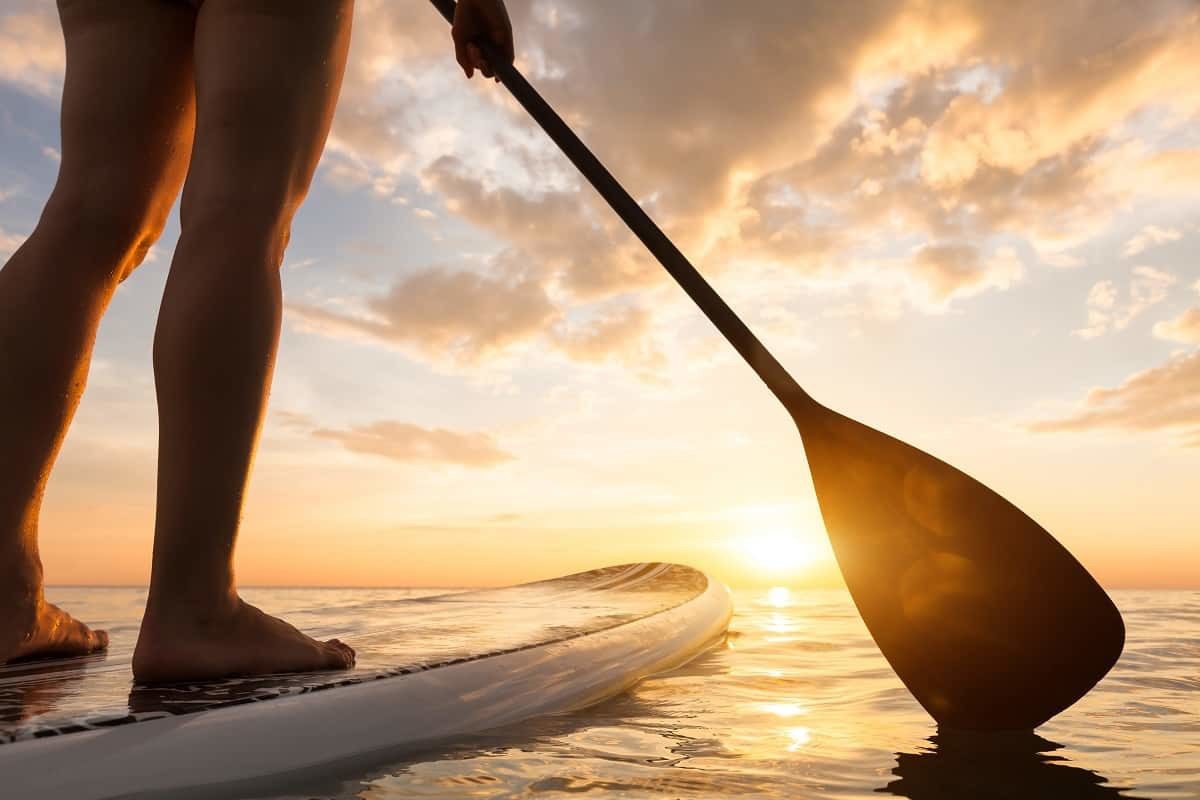
Paddleboarding in the ocean is very different from paddleboarding on a river or lake. The ocean has many variances, which means that paddling conditions change quickly. Knowing how to paddleboard in the ocean will also allow you to learn different skills like surfing or kitesurfing.
As long as you have adequately prepared and are aware of what to expect, learning to paddleboard in the ocean will allow you to enjoy this fantastic sport. So, below, we will take a look at everything you need to know. Let's get started.
Contents
Choosing the Right Paddleboard
Lake paddlers will often choose an inflatable board due to the ease of use and convenience they offer. But they are not the board you want to use in the ocean unless the water is very calm and flat, or you are in a hidden cove or protected bay.
This will typically not be the case in most oceanic situations, so you will want to get a strong epoxy board, which is called a hardboard. This type of board works well in the ocean due to its rigidity. They can withstand most weather conditions, rougher tides, and can get you past the break without breaking.
If you are vacationing somewhere and want to try out paddleboarding, be sure to rent a hardboard.
Check on the Currents and Tides
This is a relatively straightforward process as there are many charts and tables available online. If you visit a public beach that is popular for swimming, the tides will often be displayed. If not, you can always check-in at the local surf shops.
Low tides will often create bigger waves, and you want to avoid strong currents (well, you actually want to avoid most currents, but strong ones particularly). Once you get to the beach, chat with the locals. Occasionally, strange currents can happen without any notice, and you need all the information you can get to stay safe and enjoy your paddleboarding.
Prepare for the Unexpected
When on the ocean, even the smallest amount of wind makes a massive difference to your paddleboarding experience, so make sure you are ready for anything nature throws at you.
Keep a flotation device, water, snacks, a windbreaker, and some form of contact on you at all times. This will allow you to stay safe and contact someone on land if something happens.
Before going out on the water, familiarize yourself with the beach. Note various exit and entry points, considering the tide. Additionally, keep track of the landmarks you can see at the beach you are at - perhaps a tall tree, building, or house. Scoping out the area before you head into the ocean means you can worry less and enjoy the experience more.
Find the Ideal Entry Point
Place your paddleboard in the water in an area away from surfers, swimmers, and potential hazards. The last thing you want is to hit someone with your board or get in the way of a surfer catching a wave.
Avoid entering the water close to rocks, boats, or piers. If you fall when getting onto your board, you could hit your head or body and injure yourself. Additionally, you do not want to knock your board against these objects.
Attach the Leash
Most lake paddlers don't bother with this step, but when paddling in the ocean, you must attach yourself to your board - it is your flotation device if you fall into the water or become injured. The last thing you want is your board floating away and you're left treading water in the middle of the ocean.
If you are worried about getting tangled or caught up in the leash, rest assured that the leash will detach when pressure is placed on it. The leash will not detach from a regular fall, but it should if you get caught on a rock and you try to pull free.
Pass the Break
The area where the waves turn over is called the break. If the waves are big enough, it is where the white caps form on the waves as the top curls over and crashes down. To paddle into the ocean, you need to pass the break. There are various ways to do so.
First, you could wade into the ocean until you are waist-high, waiting to get on the board until there is a pause in the waves. Luckily, these pauses are very regular and allow you some time to get past the break. Ensure you are kneeling or sitting on the board to paddle past the break, as this will give you more power and control over the board.
The second option is to pass the break the way that surfers do. Lie on your board on your stomach, then use your hands to paddle the board past the break. It is harder to do this on a paddleboard than on a surfboard due to the board's size, and you are also further out of the water with a paddleboard. This is a nifty way to do it, but your paddle can become an issue, so you will have to lie on it - something to consider.
How to Paddleboard in the Ocean
Once you are past the break and in the ocean, you can stand up and start paddling. Here are some top tips to keep in mind when paddling in the ocean:
- Your bottom arm should remain straight and fairly still
- To extend the paddle forward, pull your top arm towards your body
- Extend your reach by rotating your top shoulder
- Always insert your paddle into the ocean as far forwards as you can
- Bury the paddle in the water to get good power
- Do a few strokes on one side, then switch to the other - this will keep you moving straight
Final Thoughts
And there you have it - the quick and easy steps to paddleboarding in the ocean. It may seem daunting at first, but once you have the knack for the process, you will find that it is a calming and fun water sport that can be enjoyed by the whole family.

